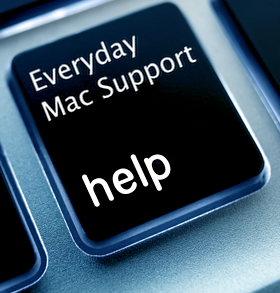This Mac tip is provided by Mark Greentree and was originally posted on Mark’s blog – Everyday Mac Support. For more of Mark’s tips visit his site, follow him on Twitter, or browse his archive of posts here.
How To: Making and Using an Alias
Do you have files on multiple hard drives or in multiple folders?
Have you ever forgotten where that important file is located on your computer?
Maybe, you are tired of navigating through folder after folder to find that document you need everyday.
Well, the answer for you may be to use an ‘alias’.
An ‘alias’ is simply a small file which represents where your original document is located. It is not a copy of your original file. It is simply a pointer to the original file.
In order to make an alias, you can use any of the following steps:
– Press Command-L on your keyboard
– Select any file or folder and proceed to File-Make Alias in the menu bar
– You can select a file or folder and either ‘right click’ your mouse or press Control-Left Click on your mouse which will bring up a menu allowing the user to select ‘make alias’
– You can hold Command-Option down while dragging and dropping any file or folder to also create an alias.
So how do you know what an alias looks like?
Well you will see a small curved arrow on bottom left hand side of the icon. Also, when the alias is created the title of the alias file will have ‘alias’ at the end. You can of course change or remove this if you wish without effecting the original file or folder.
Personally, I leave it on so I can identify the alias from the original. I do this because if you copy the alias file to say a USB memory stick, the Alias will copy but the original will not. The alias will still point to the original file but if you are planning on using a different computer you will not be able to access the original file.
Even though you will double click the alias to launch. The original file will open and changes made will be reflected in the original document. The alias holds no information relating to your original file other than it’s location.
If you have forgotten where your original file is located you can look in the ‘get info’ window for the alias and it will show you where you original is located.
It is important to remember if you move the original file your alias will no longer link to the original file. You can, in the ‘get info’ window press the button ‘select new original’ which will allow you to tell the alias file where you have moved the original file to.
You should also remember that deleting an alias will not delete the original file.


